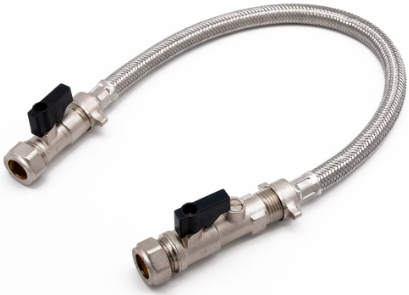
Introduction
Welcome to our comprehensive guide on understanding the combi boiler filling loop. If you own a combi boiler or are considering installing one, it’s important to familiarize yourself with its components and functionality.
In this article, we will provide you with an in-depth explanation of the combi boiler filling loop, its purpose, and how to use it effectively. Whether you’re a homeowner, a landlord, or a heating professional, this guide will equip you with the knowledge you need to navigate the world of combi boilers with confidence.
What is a Combi Boiler Filling Loop?
The combi boiler filling loop is a vital part of a combi boiler system. It is designed to allow the addition of water to the central heating system, ensuring that the boiler has the correct water pressure for efficient operation.
Combi boilers are known for their space-saving design and the ability to provide both heating and hot water from a single unit. The filling loop serves as a connection between the mains water supply and the boiler, enabling the user to replenish the system’s water when necessary.
Understanding the Purpose of the Combi Boiler Filling Loop
Maintaining the correct water pressure within a combi boiler system is essential for optimal performance. The filling loop plays a crucial role in achieving and maintaining this pressure. When a combi boiler is installed or serviced, the system may need to be refilled with water. The filling loop provides a controlled means of adding water to the system, ensuring that the pressure remains within the recommended range.
Locating and Identifying the Combi Boiler Filling Loop
The exact location and appearance of the filling loop can vary depending on the boiler model and manufacturer. However, it is typically found near the boiler unit itself. The filling loop consists of two flexible hoses with valves at each end.
These valves can be opened or closed to allow water to flow into or out of the system. The filling loop may be permanently attached to the boiler or supplied as a separate accessory that needs to be connected during installation.
How to Use the Combi Boiler Filling Loop
Using the combi boiler filling loop may seem daunting if you’re unfamiliar with the process, but it is relatively straightforward. Here’s a step-by-step guide to help you navigate the procedure with ease:
Step 1: Familiarise Yourself with the Filling Loop Components
Before you begin, take a moment to identify the filling loop components, including the valves and flexible hoses. Ensure that you have a clear understanding of how they function and how they connect to the boiler system.
Step 2: Check the Boiler’s Water Pressure
Start by checking the water pressure on your boiler. Most combi boilers have a pressure gauge, which typically displays the pressure in bar units. The ideal pressure range for a combi boiler is usually between 1 and 1.5 bar, but it’s essential to consult your boiler’s manual for specific recommendations.
Step 3: Prepare the Filling Loop
If the pressure is below the recommended range, you can begin preparing the filling loop for use. Locate the valves at each end of the filling loop and ensure they are closed by turning them clockwise. This ensures that water will not flow through the loop until you are ready to open the valves.
Step 4: Connect the Filling Loop
Connect the filling loop to the appropriate ports on the boiler. The exact method of connection will depend on your boiler model, so refer to the manufacturer’s instructions for guidance. Once connected, ensure that the connections are secure.
Step 5: Open the Valves
With the filling loop properly connected, you can now open the valves. Begin by slowly opening the valve on the mains water supply side. This will allow water to flow into the system. Keep a close eye on the pressure gauge and gradually open the second valve on the opposite end of the filling loop until the desired pressure is reached.
Step 6: Monitor the Pressure
As you open the valves, monitor the pressure gauge closely to ensure that the pressure does not exceed the recommended range. If the pressure rises too quickly or exceeds the desired level, you can close the valves partially or fully to control the flow of water.
Step 7: Close the Valves and Disconnect the Filling Loop
Once the desired pressure is achieved, you can close the valves on the filling loop by turning them clockwise. Disconnect the filling loop from the boiler, ensuring that both valves are securely closed to prevent water leakage.
Conclusion
In this comprehensive guide, we have explored the purpose and usage of the combi boiler filling loop. Understanding how to use the filling loop correctly is essential for maintaining the optimal water pressure within your combi boiler system. By following the step-by-step instructions outlined in this article, you can confidently navigate the process and ensure that your combi boiler operates efficiently.
Remember, if you’re unsure about any aspect of using the filling loop or encounter complex issues with your combi boiler, it’s always advisable to consult a qualified heating professional. They can provide expert guidance and assistance tailored to your specific boiler model and ensure that your heating system remains in optimal condition.
Investing time and effort in understanding the components and functionality of your combi boiler will empower you to make informed decisions, troubleshoot minor issues, and enjoy the benefits of a reliable heating and hot water system. Stay warm and comfortable throughout the year with a well-maintained combi boiler and a properly utilized filling loop.
